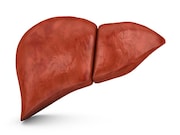Living donor versus deceased donor liver transplant also yields less resource utilization
TUESDAY, July 16, 2019 (HealthDay News) — Living donor liver transplant (LDLT) offers superior outcomes and less resource utilization over deceased donor liver transplant (DDLT), according to research published online July 10 in the Annals of Surgery.
Abhinav Humar, M.D., from the University of Pittsburgh, and colleagues conducted a retrospective review of 245 adult LDLT and 592 adult DDLT performed at a single center during 10 years.
The researchers found that LDLT recipients had superior patient survival outcomes at three years (86 versus 80 percent). LDLT recipients also had a significantly shorter length of hospital stay (11 versus 13 days) as well as a lower likelihood of intraoperative blood transfusion (52 versus 78 percent) and need for posttransplant dialysis (1.6 versus 7.4 percent). Rates of early reoperation and biliary/vascular complications were similar. LDLT had 29.5 percent lower hospital costs related to the transplant. For LDLT, researchers found no early or late deaths, a 3.1 percent three-month reoperation rate, and an overall complication rate of 19.5 percent. Use of LDLT expanded in the center, comprising 53.6 percent of transplants (versus a national average of 4.8 percent), with the transplant rate increasing from 44.8 per 100 person-years in 2015 to 87.5 in 2018.
“Living donor liver transplants, in tandem with deceased donor liver transplants, [represent] an opportunity to significantly decrease the risk of wait-list mortality, and [give] us the ability to transplant a person sooner,” Humar said in a statement.
Copyright © 2019 HealthDay. All rights reserved.








